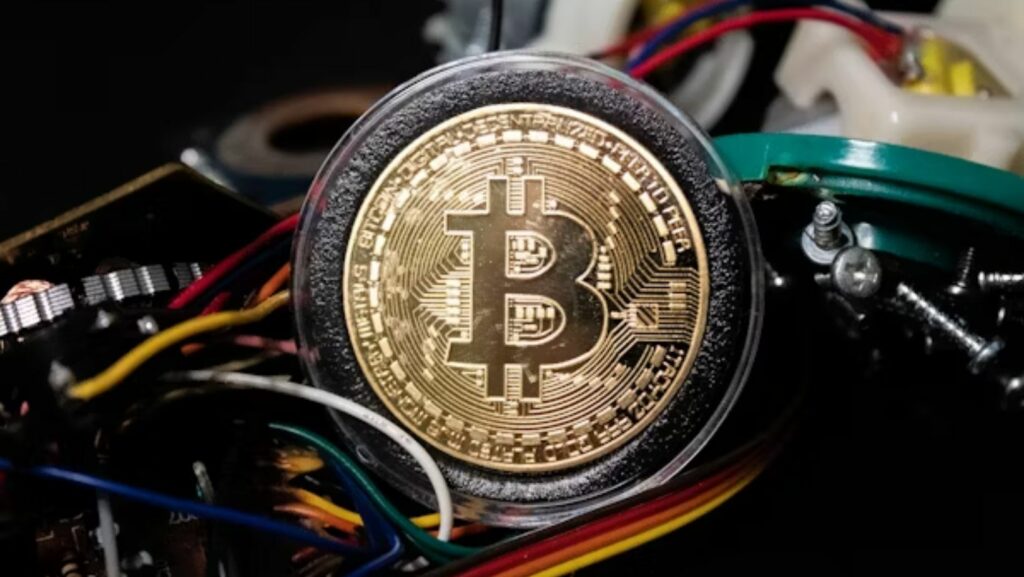Bitcoin. You’ve probably heard the name, maybe even seen the price headlines, or watched it bounce up and down like a roller coaster. But what you may not know is how it all works behind the scenes—especially the thing called Bitcoin mining.
If you’ve ever wondered what mining actually means in the world of cryptocurrency—and why it matters to anyone besides tech nerds—this article is for you.
What Is Bitcoin Mining, Really?
Let’s start simple.
Imagine you and your friends are keeping track of every time someone borrows or pays back money in a notebook. But here’s the catch: everyone has a copy of that notebook. So, to avoid cheating, you all have to agree on what’s being written down. That’s kind of how Bitcoin works.
Now, enter the miners.
Bitcoin mining is the process of confirming and recording transactions on the Bitcoin network. Think of miners as record-keepers. But instead of writing in a notebook, they’re using powerful computers to solve complex puzzles that help confirm that a transaction is valid.
Once a miner solves the puzzle, they add a new “block” of transactions to the blockchain—a massive digital ledger that everyone can see. And for their efforts, they get rewarded with new Bitcoin. That’s how new coins are created.
What Does the Future Hold for Bitcoin Mining?
A lot is changing in the world of Bitcoin, and mining is no exception.
1. Rewards Keep Getting Smaller
Every few years, the amount of Bitcoin miners receive gets cut in half. That means they’ll earn less over time, which could make mining less profitable—especially for small operations.
2. The Rise of Big Mining Farms
Because mining has become so competitive, large companies with deep pockets and access to cheap energy are dominating the space. That’s raising concerns about centralization—where a few players control too much of the network.
3. Regulation Is Coming
Some countries have banned mining entirely. Others are embracing it. But there’s no doubt that governments are paying attention. Rules about energy use, taxes, and consumer protection are likely to grow.
4. Innovation Is Key
To stay profitable, miners are constantly looking for ways to get more efficient— specialized bitcoin mining machine, smarter software, and better energy setups. Those who adapt will survive. Those who don’t? Not so much.
How Does Bitcoin Mining Actually Work?
Let’s walk through the process step by step. Don’t worry—it sounds more complicated than it really is.
1. Transactions Begin
Someone somewhere sends Bitcoin to someone else.

These transactions are broadcast across the network. But they’re not yet considered final.
2. Transactions Go Into a Block
These new transactions are gathered together in a group called a block.
3. The Puzzle Time
Now comes the tricky part. Miners compete to solve a really hard math problem—a kind of puzzle that requires lots of computer power. The goal is to find a number that, when combined with the block’s data, produces a hash (a unique string of characters) that meets certain conditions.
It’s kind of like a lottery, except instead of buying tickets, you’re burning electricity and processing power to try different combinations.
4. Winner Adds the Block
The first miner to crack the code gets to add the block to the blockchain. Everyone else in the network checks to make sure the block is valid.
5. Reward Time
As a reward for all that work, the winning miner gets some newly minted Bitcoin and earns transaction fees from the users in that block.
And then… it starts all over again with the next batch of transactions.
The Hardware Behind the Scenes
So, how do people actually mine Bitcoin?
Well, you’re not doing this with your average laptop anymore. In the early days, people could mine using a basic computer. But as Bitcoin became more popular, the puzzles got harder—and so did the competition.
Today, miners use specialized machines that are built for one job: solving these puzzles as fast as possible. These machines are loud and hot and use a lot of electricity. People often set them up in warehouses or even in shipping containers stacked with rows of buzzing, blinking machines.
And it’s not just about hardware. You need access to cheap electricity, a solid internet connection, and a cool environment to keep your equipment from overheating. That’s why some miners set up near hydroelectric dams or in cold climates.
Why Bitcoin Mining Actually Matters
Okay, so we’ve covered how it works. But why should you care?
1. It Keeps Bitcoin Secure
Mining is what makes Bitcoin trustworthy. Without it, people could fake transactions, spend the same coin twice, or corrupt the blockchain. The process of mining makes cheating so expensive and difficult that it’s just not worth it.
2. It Controls Bitcoin’s Supply
Bitcoin isn’t printed like dollars. It’s mined. The mining process has a built-in schedule that cuts the reward in half every few years (this is called the “halving”). That means fewer new coins enter the system over time, making Bitcoin more scarce and—some argue—more valuable.
3. It’s the Foundation of Decentralization
There’s no single company or government running Bitcoin. Mining spreads the power out across thousands of people around the world.

No one has full control. That’s a big deal in a world where financial systems are often centralized.
The Environmental Debate Around Bitcoin Mining
Now, here’s where things get a little heated—literally.
Mining uses a lot of energy. All those computers running 24/7 don’t just sip power; they gulp it. Some estimates say Bitcoin uses more electricity than some entire countries.
Critics say this is wasteful and bad for the planet, especially if the energy comes from fossil fuels.
But miners are pushing back. Many are turning to renewable energy sources like solar, wind, and hydroelectric power. Some set up shop near energy plants that produce extra power that would otherwise go unused.
It’s a work in progress. The environmental impact of mining is real—but so is the push to make it cleaner and more sustainable.
Final Thoughts: Why It All Comes Down to Trust
At the end of the day, Bitcoin mining isn’t just about making money—it’s about trust.
Mining is what keeps the Bitcoin network honest. It’s what makes sure no one can just rewrite the ledger and walk away rich. It’s the reason people around the world are willing to use a currency that doesn’t have a central bank behind it.
Yes, it’s technical. Yes, it’s energy-hungry. But it’s also a powerful example of how math, code, and community can come together to build something that works—without needing anyone’s permission.
So next time someone tells you Bitcoin is just fake internet money, you can smile and say: “Maybe. But behind that money is a whole world of machines, miners, and math that’s working hard to keep it all running.”

